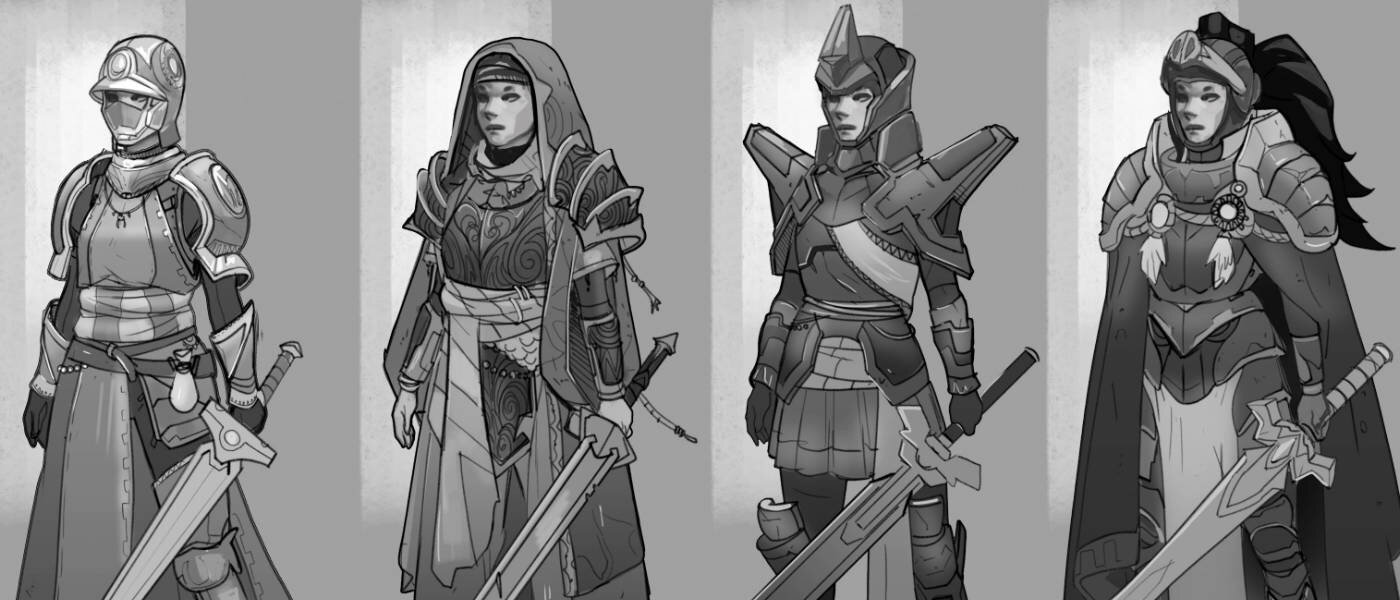How To Calculate Armor Class D&D 5e
In this master guide, you’ll learn how to calculate armor class in D&D 5e and discover new ways to use it in-game.
Armor class is simple on the surface but has nuances that can be quite confusing.
If you’re in a hurry, check out our Armor Class Calculator below to get a quick AC result. Or, pick a topic from the index.
How To Calculate Armor Class D&D 5e Index
What is Armor Class?
Armor class is the numerical representation of your character’s defense. The higher the number, the better your defenses and the less likely an enemy will be able to hit you.
AC can be the armor you’re wearing, like a paladin’s plate-mail. Or, it can be represented by natural defenses such as the shell of a Tortle or based on abilities like a dextrous Rogue.
How To Calculate Armor Class In D&D 5e
Finding your total armor class number is usually pretty easy, but there are nuances because your ability scores, race, class, feats, equipment, and proficiencies influence your AC.
It’s also important to know that if your character has several ways of calculating their base armor class, you can only use one method.
For example, the lizardfolk from Volo’s can either rely on their natural armor or equipped armor, but not both. They also can’t stack natural armor with the barbarian’s unarmored defense - you have to pick.
A character can wear just about any armor. But if they are not proficient in wearing it they will receive a disadvantage on their saving throws, can’t sneak, and can’t cast spells. It’s generally not a worthwhile option to wear armor you aren’t proficient in.
There are several ways to calculate armor class, so scroll through and find the situation that applies to your character or click an option below.
AC Calculator 5e Download
You can also use our handy AC Calculator to get a quick result.
How To Calculate Wearing No Armor AC In D&D 5e
Start with 10 as your AC, then add your Dexterity modifier (which can be negative or zero)
If you are a Barbarian, add your Constitution modifier
If you are a Monk, add your Constitution and Wisdom modifier
The total will be your base armor class. Check out this post to learn more about ability scores and modifiers.
How To Calculate Natural Armor AC D&D 5e
Start with 10 as your AC, then add your Dexterity modifier and your natural armor bonus
For game mechanics rulings, having natural armor doesn’t count as wearing armor
How To Calculate Wearing Light Armor AC In D&D 5e
Start with your Dexterity Modifier, which can be a negative number or zero.
If you’re wearing Padded or Leather armor, add 11.
If you’re wearing Studded leather armor, add 12
The total will be your base armor class.
How To Calculate Wearing Medium Armor AC In D&D 5e
If your Dexterity Modifier is 2 or higher, start with 2. Otherwise, start with your Dexterity modifier, which can be a negative number or zero.
If you’re wearing Hide armor, add 12 (max 14)
If you’re wearing Chain Shirt armor, add 13 (max 15)
If you have Elven Chain, Scale Mail or a Breastplate, add 14 (max 16)
If you’re wearing Half Plate, add 15 (max 17)
The total will be your base armor class.
How To Calculate Wearing Heavy Armor AC In D&D 5e
If you’re wearing Ring Mail, your base armor class is 14
If you’re wearing Chain Mail, your base armor class is 16
If you’re wearing Splint Armor, your base armor class is 17
If you’re wearing Plate Armor, your base armor class is 18
Add Shield (If Applicable)
If you’re using a Shield, add 2 to your base armor class unless otherwise stated.
Add Other AC Adjustments
If you have any magical armor, shields, items, feats, class bonuses, or other adjustments to your AC, add them to your total.
How Cover Affects AC
Walls, creatures, and other obstacles can be used to take cover, represented by a boost to your AC.
Using cover effectively during encounters improves your survivability without spending precious resources.
Ask your DM what’s around you during combat, then take full advantage of your surroundings.
Rules as written, there are three degrees of cover.
Half cover grants +2 to AC.
Three-quarters cover grants +5 to AC.
Total cover means the character can’t be targeted directly.
The amount of coverage, material, and positioning will determine what degree of cover is granted.
If a character is behind multiple layers of cover, it gets the most beneficial cover. They do not stack.
How To Use AC In-Game
When using AC, you’re calculating the probability of something getting through a character’s defenses. But how do you use AC from a roleplaying perspective?
As a DM, I usually let the character’s roll results guide how I flavor the results. Here’s an example.
If a goblin rolls low on an attack against a seasoned fighter, I might say, “Fumbling slightly, the goblin slices a wide arc with its rusty cutlass that clangs harmlessly off your shield.”
If that attack was a hit but rolled low damage, it might be more like, “Thrusting its cutlass erratically, the goblin catches you off guard, drawing a small cut on your thigh.”
You get the idea. The reverse is true for players attacking monsters or other baddies.
How to Flavor AC
Going back to our post on Zero Sessions, knowing about the characters, their armor, and their fighting style will give you the ammunition you need to bring armor class to life.
Personally, I just try to think of cool ways to resolve things and not use the same thing over and over again.
One of the biggest influencers for me has been playing text-based RPGs growing up, which instilled this in me, but I also pull from other areas of interest - books, video games, movies, and anime.
Don’t let AC be a footnote on everyone’s character sheet. Bring armor class more into the story in these subtle ways, and your games will be elevated that much further.






